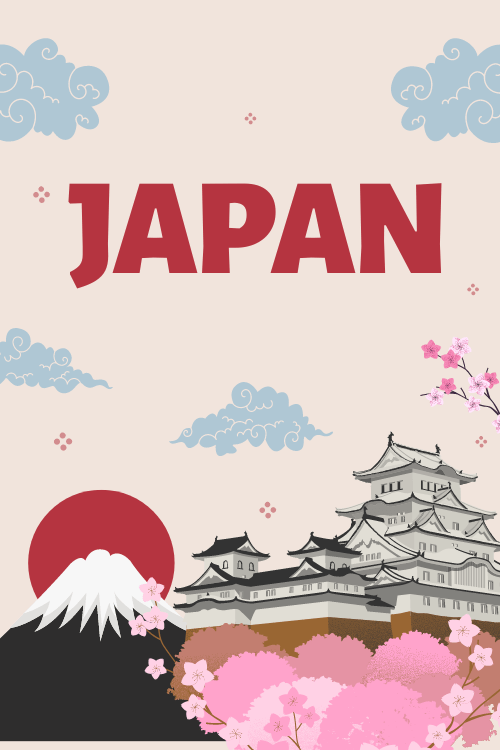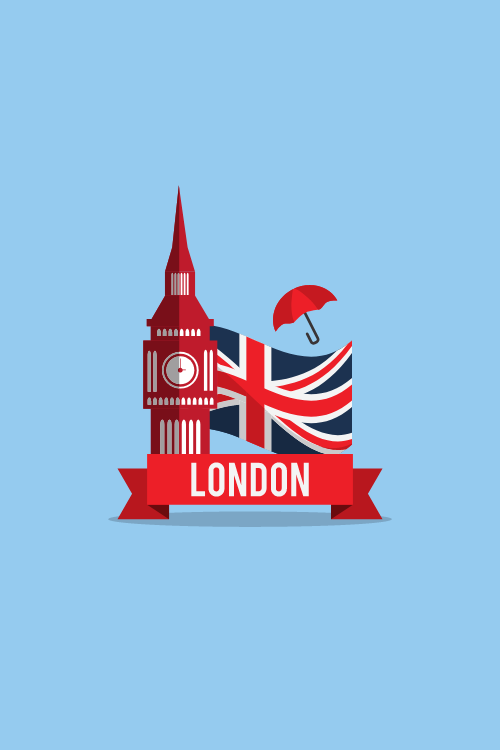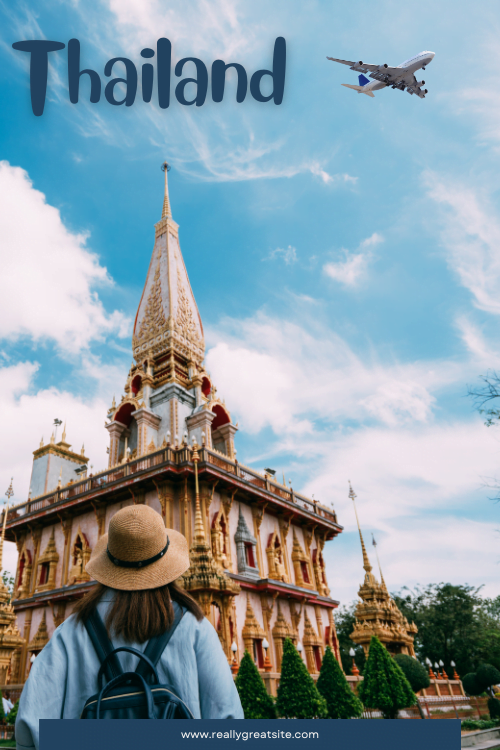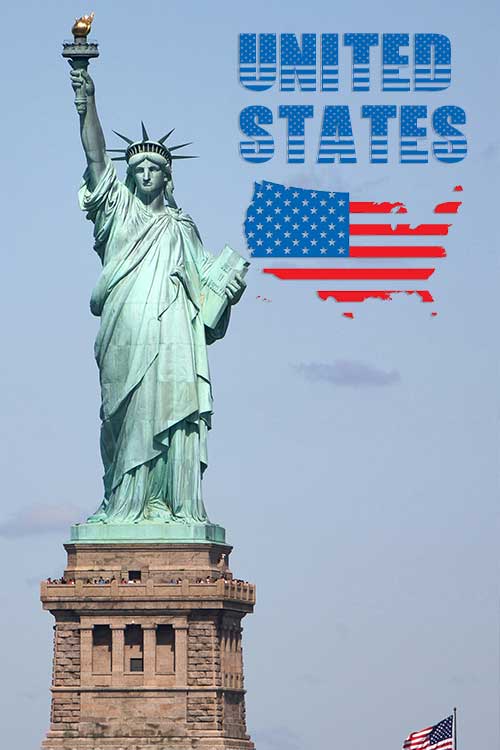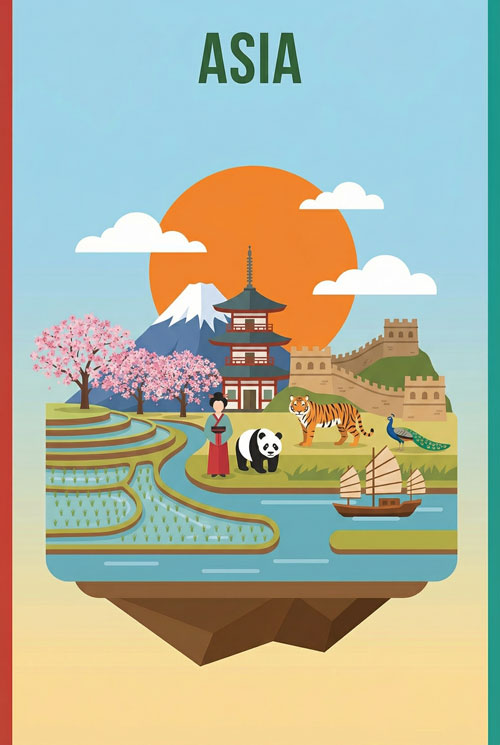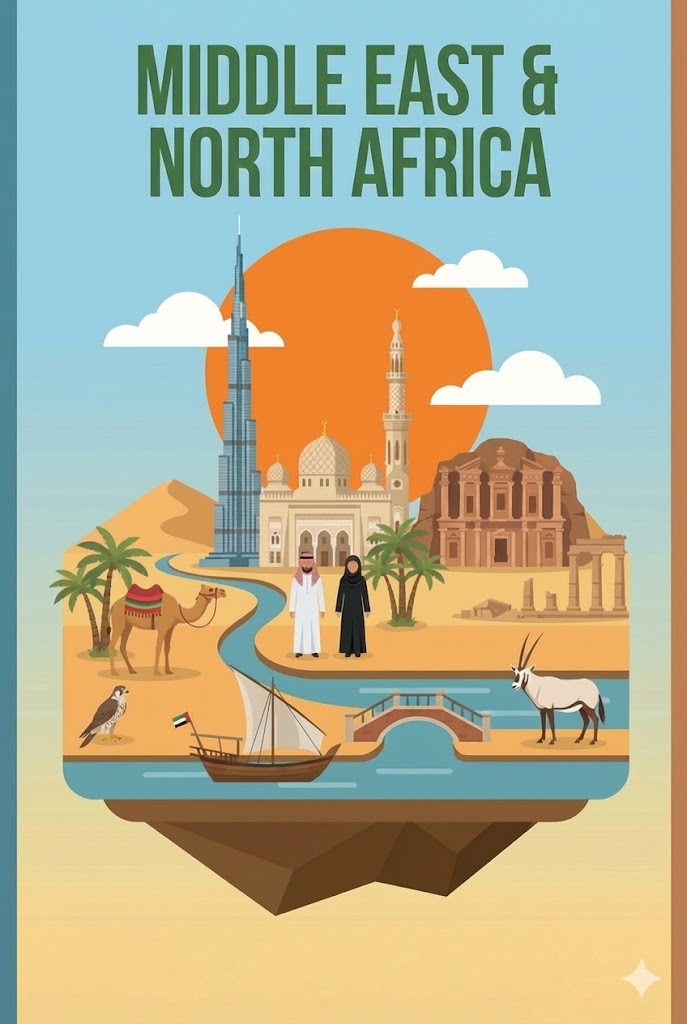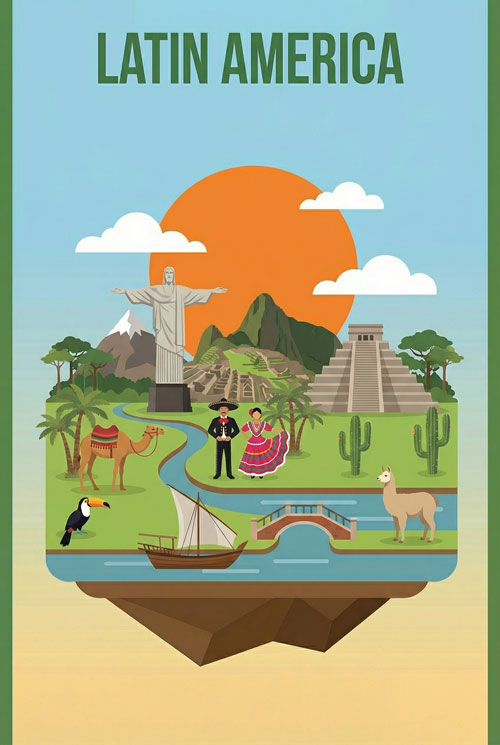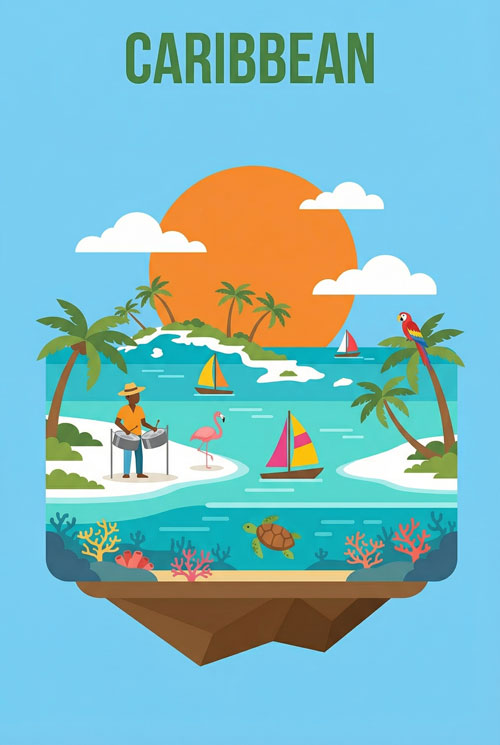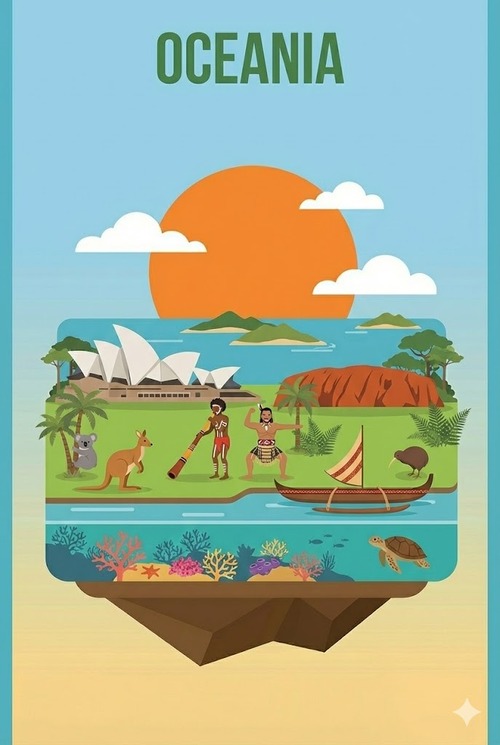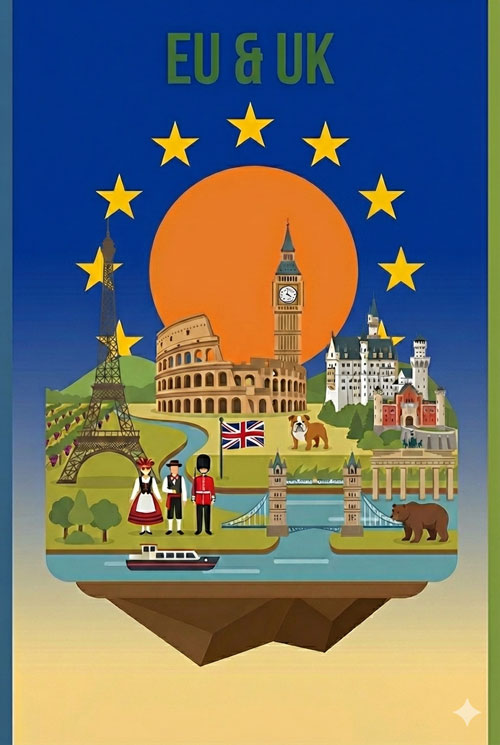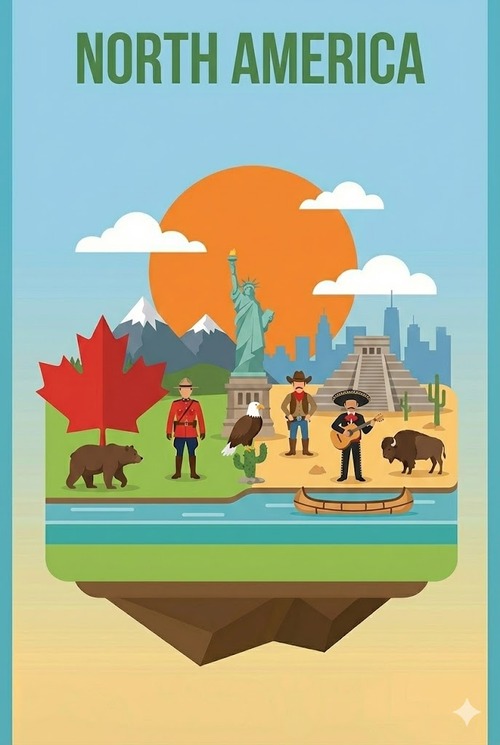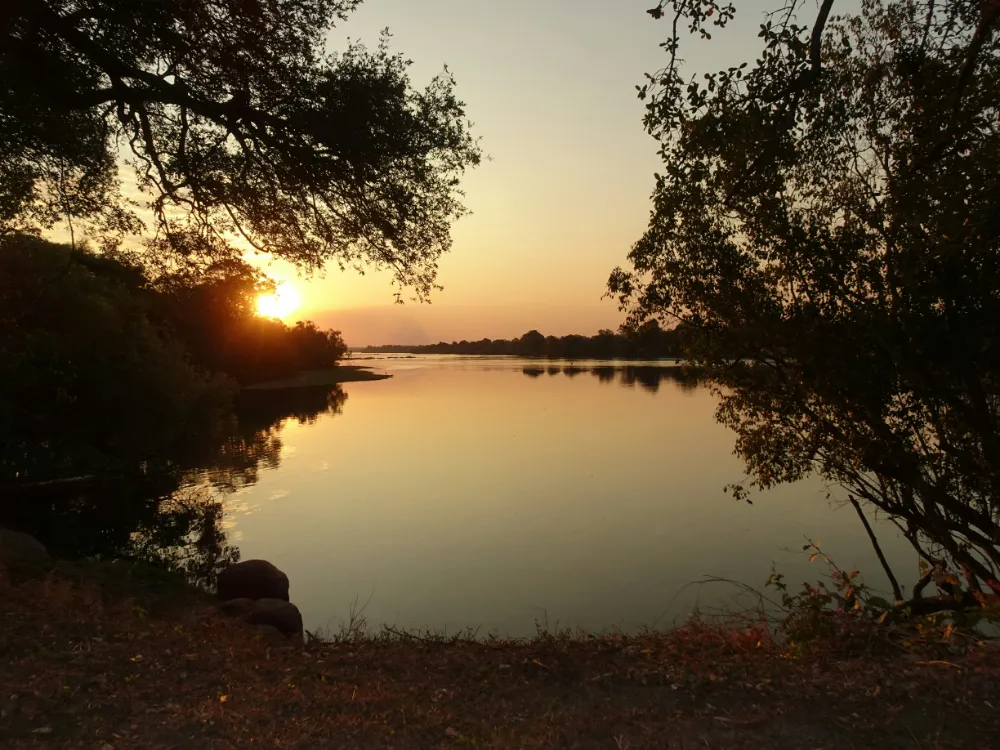eSIM Africa
Best Time To Visit Zambia: Dates, Months, Seasons And More
Welcome to Zambia, the warm heart of Africa and a land of untamed wilderness, legendary walking safaris, and the thunderous might of Victoria Falls. As a travel writer who has left a piece of my heart on its dusty tracks and along its wild rivers, I know that planning a trip here can feel like navigating a vast, beautiful map. The most common question I get is, “When is the best time to visit?” The answer, like Zambia itself, is wonderfully complex.
This guide is designed to be your trusted companion, an insider’s look into the rhythms of this incredible country. We’ll go far beyond a simple answer, exploring the trade-offs of each season and every month, so you can choose the perfect time for your adventure.
Your Zambia Journey at a Glance
Let’s get you started with the essentials. Here’s a quick overview to help you frame your travel plans before we dive deep into the details.
The Quick Answer: Finding Your Perfect Season
For the quintessential, classic African safari experience, the best time to visit Zambia is during the Dry Season, from June to October. During these months, the weather is pleasantly mild to hot and dry, the vegetation thins out, and wildlife congregates around the remaining rivers and waterholes, making for spectacular and reliable game viewing.
However, the “best” time is a deeply personal choice that involves a series of trade-offs. Your perfect Zambian adventure depends entirely on what you prioritize. Are you dreaming of lush, green landscapes and newborn animals, traveling on a tighter budget, and seeking solitude? Then the vibrant Green Season (November to April) might be your paradise, offering incredible value, phenomenal birdwatching, and dramatic photography, even if spotting big game is more of a challenge.
Zambia’s Seasons: An Overview
Zambia’s climate is defined by two distinct seasons: the Dry Season and the Wet (or Green) Season. Understanding the pros and cons of each is the first step to planning your ideal trip.
| Season | Months | Typical Weather | Wildlife Viewing | Crowds & Costs | Best For… |
| Peak / Dry Season | July – October | Cool to very hot; dry, sunny days; chilly mornings/nights. | Excellent. Sparse vegetation, animals concentrated at water. | High to Peak | Classic safaris, walking safaris, phenomenal wildlife density, Victoria Falls activities (Devil’s Pool). |
| Shoulder / Dry Season | May – June | Mild to warm; dry, clear skies. | Good to Excellent. Bush is drying out, still some greenery. | Medium to High | Great value, fewer crowds than peak, excellent game viewing, pleasant weather. |
| Green / Wet Season | December – April | Warm to hot; humid with afternoon thunderstorms. | Fair to Good. Lush, thick bush makes spotting harder. | Low | Budget travel, birdwatching (migratory birds), photography (dramatic skies, baby animals), seeing Victoria Falls at peak flow. |
| Shoulder / Wet Season | November | Hot and humid; rains begin, often in the afternoon. | Good. Game viewing is still excellent before the bush gets too thick. | Low to Medium | Great value, bat migration in Kasanka, seeing newborn animals, dramatic photography. |
A Deep Dive: Your Month-by-Month Guide to Zambia
Every month in Zambia offers a unique personality. Whether it’s the peak of the floods or the height of the heat, there’s always a reason to visit. Here’s a detailed look at what to expect throughout the year.
January: The Heart of the Green Season
- Weather Snapshot: This is the peak of the summer rainy season. Expect hot, humid days with dramatic and often heavy afternoon thunderstorms that leave the landscape looking impossibly lush and vibrant. In Lusaka, expect average temperatures around 26°C (79°F) with significant rainfall.
- Costs & Crowds: This is the low season. With many camps closed due to inaccessible roads, the few that remain open offer their lowest rates of the year. You’ll feel like you have the place to yourself.
- Key Events & Festivals: The year kicks off with the New Year’s Day public holiday on January 1.
- Insider’s Perspective: January is for the safari connoisseur. While not recommended for a first-timer hoping to tick off the Big Five, it offers a unique and serene adventure. The few camps that stay open, particularly in South Luangwa, pivot to river-based safaris, allowing you to explore the swollen lagoons and channels by boat—a truly magical experience. Birding is phenomenal, with resident and migratory species in full display, and the emerald-green bush provides a stunning, dust-free backdrop for photographers. Victoria Falls begins to swell with the local rains, a prelude to its peak power.
February: Water World & Winged Wonders
- Weather Snapshot: The rains continue, keeping the country wet and humid. The bush is thick, and rivers are high. South Luangwa can see temperatures of 31°C (88°F) with heavy rainfall.
- Costs & Crowds: Still firmly in the low season, February offers excellent value for money, but your choice of lodges is very limited.
- Key Events & Festivals: The last Saturday of February hosts the Nc’wala Ceremony in the Eastern Province. This is a major cultural event where the Ngoni people give thanks for the first harvest. Led by the Paramount Chief, it’s a spectacular display of warrior culture, with participants clad in animal skins, brandishing shields, and performing powerful dances.
- Insider’s Perspective: Victoria Falls is growing more powerful by the day. For the intrepid traveler, the main draw this month is the chance for profound cultural immersion at the Nc’wala ceremony. Safari activities are limited, though some camps offer boating and walking. It’s a fantastic month for dedicated birdwatchers and for anglers in the Lower Zambezi.
March: The Smoke That Thunders
- Weather Snapshot: The rains begin to taper off, but the landscape remains incredibly lush and green. The water table is at its highest.
- Costs & Crowds: Still low season, meaning quiet camps and attractive rates.
- Key Events & Festivals: National holidays include Youth Day (March 12) and International Women’s Day (March 8). Depending on the flood levels, the magnificent Kuomboka Ceremony may take place this month. One of Africa’s grandest festivals, it sees the Lozi King (the Litunga) journey in a massive, ornate barge from his flooded palace to his home on higher ground, accompanied by the thunderous sound of royal drums.
- Insider’s Perspective: March is all about one thing: Mosi-oa-Tunya, “The Smoke that Thunders.” The Zambezi River is at its absolute peak flow, and Victoria Falls is a terrifyingly powerful spectacle of nature. The spray is so immense that it creates its own localized rainforest and can obscure the view from the ground. To truly appreciate the scale, you need to see it from the air via a helicopter or microlight flight.
April: The Emerald Season’s Farewell
- Weather Snapshot: The rains have largely ceased by mid-April, leaving behind crisp, clean air and a dust-free, emerald-green landscape. It’s a photographer’s dream.
- Costs & Crowds: This is a fantastic shoulder month. Accommodation rates are still low, and the national parks are quiet as more camps begin to reopen for the season.
- Key Events & Festivals: April often coincides with Easter holidays. The Kuomboka Ceremony is most likely to happen this month if it didn’t in March. The Livingstone International Cultural and Arts Festival (LICAF), a vibrant street carnival, has also been held in April. Kenneth Kaunda’s Birthday is a public holiday on April 28.
- Insider’s Perspective: April is one of Zambia’s best-kept secrets. You get the breathtaking beauty of the Green Season’s landscapes combined with the pleasant, dry weather of the coming winter. Wildlife viewing improves daily, and the parks are full of newborn antelopes, their spindly legs a delight to see. While predators can still be tricky to spot in the lush vegetation, the trade-off is a stunningly beautiful and quiet safari experience. Victoria Falls is still a magnificent torrent of high water.
May: The Transition to Prime Time
- Weather Snapshot: May marks the official start of the cool, dry winter. Days are warm and sunny, skies are clear, and rain is rare. Early mornings and evenings can be surprisingly cool, so pack a layer.
- Costs & Crowds: High season pricing begins to kick in, but the parks are still much quieter than they will be from July to September, making it a great-value shoulder month.
- Key Events & Festivals: Public holidays include Labour Day (May 1) and African Freedom Day (May 25).
- Insider’s Perspective: Many consider May the most scenic month of the year. The bush is a perfect mix of lingering green and drying gold, offering fantastic photographic opportunities. As more safari camps reopen, accessibility to the parks is excellent. It’s also the prime time to venture to the vast Bangweulu Wetlands to search for one of Africa’s most sought-after birds, the bizarre and prehistoric-looking shoebill stork.
June: The Walking Safari Season Begins
- Weather Snapshot: The weather is near-perfect: cool, dry, and comfortable. Days are filled with sunshine, while nights are crisp and chilly. Lusaka averages around 23°C (73°F) with virtually no rain.
- Costs & Crowds: Peak safari season is underway, but it’s still less crowded than the months to come. You can often find good deals, especially at the beginning of the month.
- Key Events & Festivals: The Kazanga Ceremony of the Nkoya people, one of Zambia’s oldest traditional ceremonies, may be held this month, celebrating their heritage through dance and music.
- Insider’s Perspective: With the ground now firm and dry, June marks the official start of the walking safari season. South Luangwa, the undisputed home of the walking safari, is the place to be, allowing you to connect with the bush on an intimate level. The rivers are still full, the bush retains some color, and the wildlife viewing is excellent. It’s a month that strikes a perfect balance between great game viewing, comfortable weather, and manageable crowds. Victoria Falls is at an ideal level for both spectacular views and activities.
July: Peak Season Perfection
- Weather Snapshot: This is the heart of the Zambian winter. Days are beautifully mild and sunny, but mornings and evenings are properly cold. Layering your clothing is essential for early game drives.
- Costs & Crowds: This is the absolute peak of the safari season. All camps are open, prices are at their highest, and popular parks like South Luangwa are at their busiest.
- Key Events & Festivals: The first Monday and Tuesday of the month are the Heroes’ Day and Unity Day public holidays. It’s a big month for ceremonies, including the two-day Umutomboko Ceremony of the Lunda people in the north and the Lwiindi Gonde Ceremony of the Tonga people in the south.
- Insider’s Perspective: Zambia is now in high gear. Wildlife viewing is simply spectacular across the country as the vegetation becomes sparse and animals are forced to seek out permanent water sources. South Luangwa is the best for big game and predators, the Lower Zambezi is perfect for river cruises and tiger fishing, and Kafue offers a sense of vast, remote wilderness. At Victoria Falls, the water levels have dropped enough to open up the ultimate bucket-list activity: a swim in the Devil’s Pool, a natural rock pool right on the edge of the abyss.
August: Prime Time for Predators and Walking
- Weather Snapshot: The days are getting noticeably warmer, but it remains dry with cool nights. The bush is now very dry, brown, and offers excellent visibility.
- Costs & Crowds: Peak season continues unabated. Expect high prices and the busiest parks of the year.
- Key Events & Festivals: The first Monday is Farmers’ Day, a public holiday. August is the epicenter of Zambia’s cultural calendar. Highlights include the Kulamba Ceremony, which unites Chewa people from three countries, and the incredible Likumbi Lya Mize of the Luvale people, famous for its UNESCO-recognized Makishi masquerade. The Ukusefya Pa Ng’wena of the Bemba people also takes place.
- Insider’s Perspective: This is arguably the single best month to visit Zambia for a combined trip. The wildlife viewing is phenomenal, and walking safaris are at their absolute best. It’s the perfect time to visit Victoria Falls, with great views and access to all activities. The sheer density of major cultural festivals also makes it an unparalleled time for cultural immersion, though you would need to plan a dedicated itinerary to experience them.
September: Hot, Dry, and Dramatic
- Weather Snapshot: The heat builds steadily through the month. It’s consistently hot and very dry, with a dusty, parched landscape.
- Costs & Crowds: Still considered peak season, though crowds may begin to thin slightly towards the end of the month as the heat intensifies.
- Key Events & Festivals: The Shimunenga Ceremony of the Bai-ila people, a three-day event timed to the full moon, may occur this month.
- Insider’s Perspective: A superb month for the dedicated safari-goer. Predator action is often at its most dramatic as prey animals are stressed and concentrated near water. For birders and photographers, a major highlight is the arrival of thousands of southern carmine bee-eaters, which begin nesting in the riverbanks of the Luangwa Valley, creating a breathtaking spectacle of color and activity. Walking safaris remain excellent, but are best enjoyed in the cooler hours of the early morning and late afternoon. The water flow over the Zambian side of Victoria Falls is now noticeably diminishing.
October: The “Suicide Month”
- Weather Snapshot: This month earned its local nickname for a reason. The heat is relentless and oppressive, especially in the low-lying Luangwa and Lower Zambezi valleys, where temperatures can soar above 40°C (104°F). The air is heavy with the promise of rain.
- Costs & Crowds: While still technically high season for game viewing, the extreme heat deters many visitors, so parks can be quieter than in mid-winter.
- Key Events & Festivals: National holidays include the National Day of Prayer (October 18) and Independence Day (October 24).
- Insider’s Perspective: If you can stand the heat, the reward is some of the most phenomenal game viewing on the planet. Wildlife is completely tethered to the last few water sources, and the action can be intense. Game drives are strictly an early morning and late afternoon affair. This is the best time of year for tiger fishing on Lake Kariba. At Victoria Falls, the Zambian side may be reduced to a mere trickle, often necessitating a border crossing into Zimbabwe to see the main cataracts. Conversely, the low water levels make for the most thrilling white-water rafting of the year.
November: The Great Bat Migration & The First Rains
- Weather Snapshot: A month of dramatic transition. The first downpours arrive, usually in the latter half of the month, breaking the intense heat. It can be hot and humid, with spectacular storm clouds building in the afternoons.
- Costs & Crowds: A classic shoulder month. Rates drop significantly as many camps prepare to close for the wet season, offering fantastic value.
- Key Events & Festivals: A globally significant natural event occurs now in Kasanka National Park: the world’s largest mammal migration. Up to 10 million straw-coloured fruit bats converge on a tiny patch of evergreen forest to feast on the ripening fruits—a sight and sound to behold.
- Insider’s Perspective: November is a month of unique opportunities. The bat migration is a bucket-list item for any serious nature enthusiast. The first rains act as a trigger for new life: many antelope species give birth, and migratory birds from Europe and other parts of Africa begin to arrive. For photographers, the dramatic skies, lightning storms, and contrast between new green shoots and the parched earth are magnificent.
December: The Green Season Returns
- Weather Snapshot: The rainy season is now fully established. Expect warm, humid conditions with regular, often short-lived, afternoon showers. The rivers begin to rise, and the bush transforms into a thick, green, and colorful paradise.
- Costs & Crowds: This is the low season. You’ll find excellent value at the lodges that remain open, but most remote bush camps are now closed and inaccessible until the following year.
- Key Events & Festivals: Christmas Day (December 25) is a public holiday.
- Insider’s Perspective: The landscape is reborn. The dust is gone, the air is crystal clear, and the country is quiet and peaceful. This is a wonderful time for avid birdwatchers, walkers, and anyone who wants to see the African bush in its most vibrant and lush state, far from the peak-season crowds.
Understanding Zambia’s Two Worlds: The Dry vs. The Green Season
To truly grasp the best time to visit, it helps to think of Zambia as two different worlds. Your choice between the Dry and Green seasons will fundamentally shape every aspect of your safari, from the colors you see to the sounds you hear.
The Dry Season (May – October): The Classic Safari Experience
- Atmosphere & Vibe: This is the Africa of classic documentaries. The experience is defined by the crisp, cool air of a pre-dawn game drive in an open 4×4, the scent of crushed wild sage under the tires, and the iconic golden light filtering through a dusty haze. Life revolves around water; the tension is palpable as animals—both predator and prey—are drawn to the shrinking rivers and lagoons. It’s a season of high drama, exceptional visibility, and a powerful sense of the wild, untamed bush.
- Seasonal Highlights:
- Unrivaled Game Density: The lack of water across the landscape forces animals into predictable patterns. This concentration leads to spectacular sightings of massive elephant herds, sprawling buffalo herds, and the lions and leopards that follow them.
- The Walking Safari: With the ground firm and the grass low, this is the ultimate time to experience the magic of a walking safari. Born in South Luangwa, this activity allows you to learn the art of tracking, interpret the language of the bush, and feel a profound connection to the wilderness that’s impossible from a vehicle.
- Brilliant Stargazing: The clear, cloudless winter nights, far from any light pollution, offer some of the most breathtaking stargazing on the planet. The Milky Way stretches across the sky like a celestial river.
- What to Pack: Layering is key. Pack lightweight, neutral-colored clothing (khaki, beige, green, brown) for the daytime. Bright colors and white are discouraged for walking safaris, and dark blue or black can attract tsetse flies. Crucially, bring a warm fleece and a windproof jacket for the very cold early mornings and evenings. A sun hat, sunglasses, sunscreen, and sturdy, comfortable walking shoes are non-negotiable.
The Green Season (November – April): The Emerald Adventure
- Atmosphere & Vibe: This season is a sensory feast. The air is filled with the scent of petrichor—the smell of the first rains hitting hot, dry earth. Towering, dramatic thunderclouds build in the afternoons, often culminating in a spectacular but brief downpour that washes the dust from the air. The landscape is transformed into a vibrant, almost impossibly green paradise, humming with the sound of insects and birds. It’s a time of rebirth, growth, and deep tranquility, offering a sense of solitude and wonder.
- Seasonal Highlights:
- Photographer’s Paradise: The vibrant green backdrops make wildlife subjects pop. The dramatic skies, rainbows, and soft, diffused light create unparalleled photographic conditions. There is also far less dust to contend with, which is a blessing for camera gear.
- Birdwatching Mecca: This is a world-class birding destination year-round, but the Green Season is exceptional. The arrival of countless migratory birds from Europe and other parts of Africa adds a dazzling array of color and song to the resident species.
- Nursery of the Bush: The abundance of food and water triggers a birthing season for many species. You’ll be treated to the delightful sight of newborn impala, puku, and warthogs, which in turn creates opportunities to witness predators in action.
- What to Pack: A lightweight, waterproof jacket is essential for the afternoon showers. Pack quick-drying clothes and effective insect repellent containing DEET, as mosquitoes are more prevalent. While neutral colors are always a good idea on safari, the strictness is less critical than during the dry season, unless you are on a specific walking-focused trip.
Tailoring Your Trip: The Best Time to Visit Zambia For…
Now that you understand the seasonal flow, let’s get specific. The “best” time truly depends on your personal travel dreams.
Unrivaled Wildlife Viewing
For the highest density and most dramatic wildlife encounters, the answer is clear: the late Dry Season, from August to October. The ecological pressure is at its peak. Water sources have dwindled to a few key locations along the major rivers—the Luangwa, Zambezi, and Kafue. This forces an incredible concentration of animals into smaller areas, leading to frequent and intense interactions between predators and prey. South Luangwa National Park, famously known as the “Valley of the Leopards,” is particularly rewarding during this period, offering some of the best leopard sightings in Africa.
Experiencing Victoria Falls
There is no single “best” time to see the Falls; the ideal time depends entirely on what you want to see and do, as the experience changes dramatically with the river’s flow.
- For Peak Power & Awe (March – May): This is when the Zambezi River is in full flood. The experience is less about a clear view and more about feeling the raw, thunderous power of nature. The sound is deafening, and the immense plume of spray can be seen from miles away. To truly grasp the scale, a helicopter or microlight flight is highly recommended.
- For the “Postcard” View (June – August): This is the sweet spot for most visitors and for classic photography from the ground. The water volume is still immense and spectacular, but the mist has subsided enough to allow for clear, breathtaking panoramic views of the main cataracts.
- For Peak Adrenaline & Activities (August – December): As the water level drops, unique and thrilling activities become possible. This is the window to swim in the famous Devil’s Pool, a natural infinity pool on the very lip of the abyss, or to experience the most intense and exciting white-water rafting as the low water exposes more challenging rapids.
Budget-Conscious Travelers
The most affordable times to visit Zambia are the shoulder months (May, June, and especially November) and the heart of the Green Season (December to April). During these periods, safari lodges and tour operators offer significant discounts and special deals to attract visitors. While many remote bush camps close, excellent and accessible camps like Flatdogs Camp in South Luangwa remain open and provide incredible value. To further stretch your budget, consider using the reliable luxury coach services for travel between major hubs like Lusaka and Livingstone, and look for campsites with self-catering facilities.
Keen Photographers
Your ideal time depends entirely on the style of photos you want to capture.
- For Dramatic, Dusty, Golden-Light Action: The late Dry Season (September and October) is your time. The concentrated wildlife action, combined with the golden light of sunrise and sunset filtering through the atmospheric dust, creates powerful, cinematic images.
- For Vibrant Colors and Lush Landscapes: The Green Season (November to March) is a paradise. The verdant, emerald backgrounds make animal subjects stand out beautifully. Dramatic storm clouds, newborn animals, and a kaleidoscope of colorful migratory birds provide unique photographic subjects you won’t find at any other time of year.
The Ultimate Walking Safari
Zambia is the home of the walking safari, and the prime season to experience it is from June to September. During these months, the weather is cool and pleasant for walking, the ground is dry, and the grass is low, ensuring better visibility and safety. South Luangwa National Park is the undisputed global capital for this activity, a legacy of the legendary conservationist Norman Carr. You can choose from short morning walks out of a permanent lodge to immersive, multi-day mobile walking safaris where you trek between simple, elegant bush camps set up just for your group.
Immersive Cultural Festivals
Zambia’s rich cultural tapestry is a destination in itself, with over 70 ethnic groups celebrating their heritage through vibrant traditional ceremonies. Planning your trip around one of these events offers a truly unforgettable and authentic experience.
| Ceremony | People / Tribe | Province | Typical Month(s) | Significance |
| Nc’wala | Ngoni | Eastern | February | A harvest thanksgiving celebrating Ngoni warrior heritage. |
| Kuomboka | Lozi | Western | March / April | “Getting out of the water,” the spectacular journey of the king to higher ground. |
| Kufukwila | Kaonde | North-Western | May | Paying homage to the chief with traditional feasting and dance. |
| Umutomboko | Lunda | Luapula | July | A victory celebration commemorating the Lunda migration from Congo. |
| Kulamba | Chewa | Eastern | August | A huge thanksgiving festival uniting Chewa people from three nations. |
| Likumbi Lya Mize | Luvale | North-Western | August | Famous for its UNESCO-recognized Makishi masquerade, marking the end of the Mukanda initiation. |
| Ukusefya Pa Ng’wena | Bemba | Northern | August | A grand ceremony celebrating the history and lineage of Bemba chiefs. |
| Shimunenga | Ba-Ila | Southern | Sep / Oct / Nov | A spiritual thanksgiving to the ancestors for providing food for the year. |
| Kulamba Kubwalo | Lenje | Central | October | A harvest festival where subjects pay homage to their senior chief. |
###…A Memorable Family Adventure
The best time for a family safari is generally the Dry Season, specifically from June to August. The weather is mild and pleasant, the risk of malaria is at its lowest (though year-round precautions are essential), and the excellent, easy wildlife viewing is perfect for keeping children captivated. Be aware that many lodges and activities have age restrictions; for instance, walking safaris are typically for children aged 12 and over. For maximum flexibility and comfort, consider booking one of Zambia’s exclusive-use private safari houses, such as Chongwe River House or Luangwa Safari House, which come with a private guide, vehicle, and often a swimming pool.
Part 5: Essential Zambia Travel Planner
No matter when you decide to go, this practical information will help you plan a smooth and successful trip.
Getting There & Around
- International Gateways: Your journey will likely begin at one of two main airports. Kenneth Kaunda International Airport (LUN) in the capital, Lusaka, is the primary hub for the country. For direct access to Victoria Falls, Harry Mwanga Nkumbula International Airport (LVI) in Livingstone is your best bet.
- Domestic Travel:
- By Air: Zambia is vast, and flying is the most efficient way to travel between major safari regions like South Luangwa, the Lower Zambezi, and Kafue. Proflight Zambia is the country’s largest and most established domestic airline, connecting all major hubs. Other carriers include the relaunched national airline, Zambia Airways, and Mahogany Air.
- By Road (Self-Drive): Renting a vehicle, particularly a 4×4, offers incredible freedom but demands careful planning. A 4×4 is non-negotiable for accessing national parks, especially during the wet season when dirt roads turn to thick mud. Major international rental agencies like Avis have desks at the airports, but it’s wise to book well in advance.
- By Bus: For travel between major cities (e.g., Lusaka to Livingstone), luxury coach services like Mazhandu, Power Tools, and Intercape are comfortable, safe, and affordable options. Local minibuses are the cheapest way to get around but can be crowded and vary in safety and roadworthiness.
Where to Stay: A Snapshot
- Livingstone: As the tourism capital, Livingstone has an accommodation option for every style and budget. You’ll find everything from iconic luxury lodges on the Zambezi River like The Royal Livingstone and Tongabezi, to comfortable hotels, charming guesthouses, and vibrant backpacker hostels such as the famous Jollyboys.
- Lusaka: The bustling commercial heart of Zambia offers a wide array of hotels catering to business and leisure travelers, including international brands like Radisson Blu, Protea by Marriott, and InterContinental, alongside numerous guesthouses and lodges.
- South Luangwa (Mfuwe): Mfuwe is the gateway town to South Luangwa National Park. Accommodation is clustered here and also scattered deep within the park itself as intimate bush camps. The range is enormous, from budget-friendly and beloved institutions like Flatdogs Camp (offering everything from camping to chalets) to the most exclusive and luxurious safari lodges in Africa.
Insider Tips & Hidden Gems
- A Taste of Zambia: You cannot leave without trying Nshima, the national dish. This thick porridge of maize flour is the foundation of every meal, eaten with your hands and used to scoop up flavorful stews known as ndiwo. Be sure to try Ifisashi (leafy greens cooked in a rich peanut sauce) and Kapenta (tiny dried sardines, usually fried with tomato and onion). For the more adventurous palate, fried Ifinkubala (caterpillars) are a protein-rich local delicacy.
- Beyond the Famous Parks: To experience the true soul of wild Zambia, venture beyond the main safari circuit.
- Kasanka National Park: A must-visit from October to December for the mind-boggling fruit bat migration.
- Bangweulu Wetlands: This vast, community-owned wetland is one of the best places in Africa to find the rare and coveted shoebill stork.
- Liuwa Plain National Park: Journey to this remote western wilderness to witness Africa’s second-largest wildebeest migration, a truly off-the-beaten-path spectacle.
- North Luangwa National Park: For the safari purist, this is an even wilder, more remote version of its southern cousin. It’s almost exclusively a walking safari destination and is the only park in Zambia where you can see reintroduced black rhinos.
- Local Etiquette: Zambians are renowned for their warmth, friendliness, and peaceful nature. A simple, friendly greeting (“Muli bwanji?”) will be warmly received. When eating in a traditional setting, always use your right hand. Showing respect for elders is a cornerstone of the culture.
Health & Safety
Your health and safety are paramount. While Zambia is a peaceful and stable country, there are non-negotiable precautions to take.
- Malaria: Malaria is a high risk in all areas of Zambia, throughout the entire year, including Lusaka and other cities. It is essential to consult your doctor or a travel clinic well in advance of your trip to obtain the correct antimalarial prophylaxis. In addition, you must be diligent with bite prevention: use an insect repellent containing DEET, wear long sleeves and trousers in the evenings, and sleep under a mosquito net.
- Yellow Fever: A Yellow Fever vaccination certificate is required for entry only if you are arriving from a country with a risk of yellow fever transmission (or have transited for more than 12 hours in such an airport). Regulations can change, so always check the latest requirements before you travel.
- Other Vaccinations: Visit a travel health professional 6 to 8 weeks before your departure. They will likely recommend vaccinations for Hepatitis A, Typhoid, and ensuring your Tetanus booster is up to date.
- General Safety: Zambia is widely regarded as one of the safest countries in Africa to visit. The people are peaceful and welcoming. However, as with anywhere in the world, you should take sensible precautions. Petty crime like pickpocketing can occur in busy urban areas. Avoid walking alone at night in cities, and always be aware of your surroundings and valuables.
Stay Connected in Zambia with an eSIM
In today’s world, having data access the moment you land is more than a convenience—it’s essential for navigating from the airport, booking a Yango ride-hailing service, or letting your lodge know you’ve arrived safely. The last thing you want to start your incredible Zambian adventure with is the bill shock of expensive international roaming fees or the hassle of finding a local SIM card vendor, filling out paperwork, and getting it registered.
There is a perfect modern solution: an eSIM is convenient, affordable, and incredibly easy to set up. With an eSIM from eSIM4.com, you can download a data plan for Zambia before you even leave home and activate it the moment you land. No more bill shock, no more airport SIM queues.
Need affordable prepaid mobile data for your trip to Zambia? Click here to see our plans.

